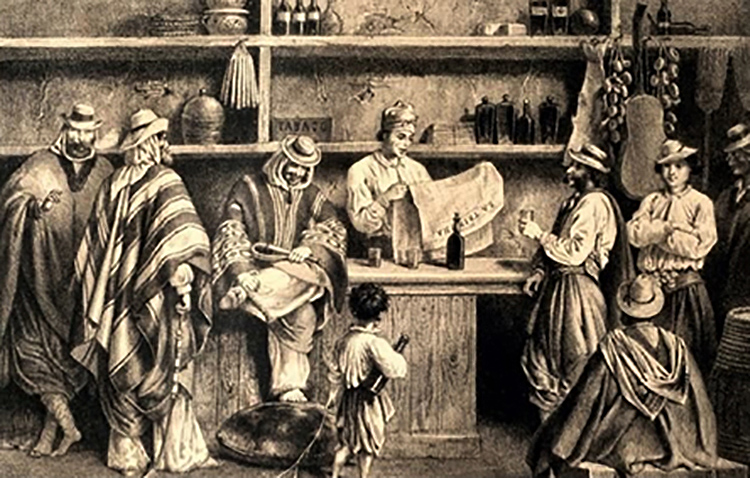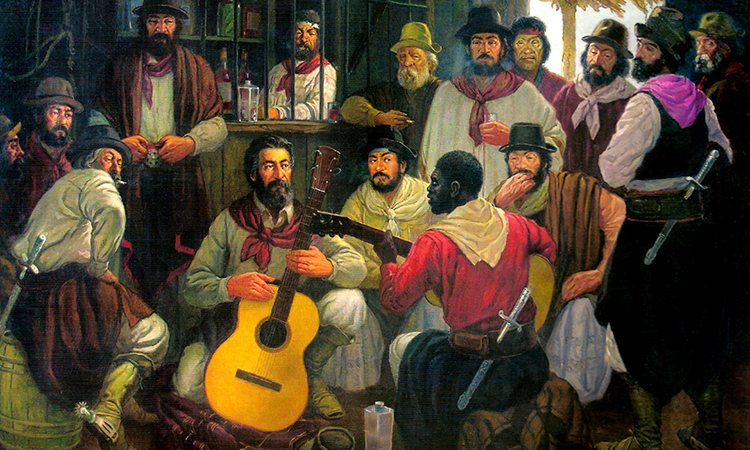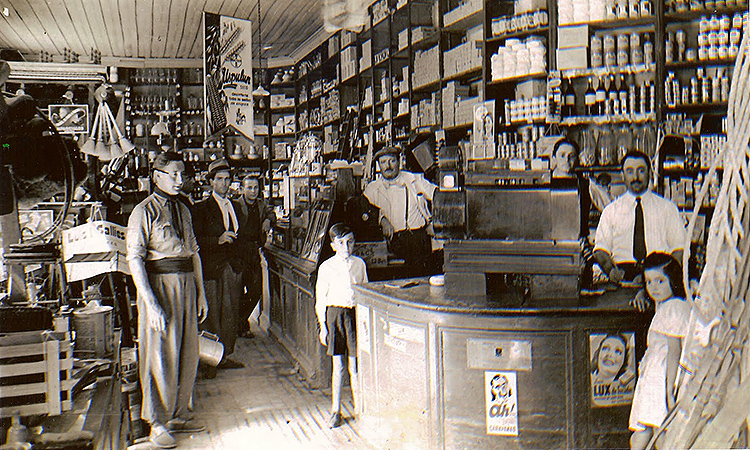Where do Gauchos meet for a drink?
Pulperías, boliches, almacenes de ramos generales and bars are all places anchored in Argentinian tradition, each with a unique origin and function.
First there was the Pulpería…

Although the time of the first pulperías is unknown, historians date the construction of the first of these establishments in the 16th century. It was originally a commercial space typical of the different Hispanic-American regions, from Central America to the Southern Cone, which provided customers of low and middle social classes with essential products for everyday life. Food, drinks, medicines, charcoal, fabrics, etc. It was a place of business, but also much more. The locals had the habit of meeting there to chat, drink, watch cockfights, play dice or cards, and hear local news … Tables and chairs were available for inhabitants, who enjoyed the place as a genuine meeting point.
The origin of the word pulpería is uncertain; nobody can affirm exactly which hypothesis is correct. Some say that the word derives from pulpo (octopus) because in the first pulperías, it was customary to serve pulpo a la gallega, a traditional Spanish dish. For others, the reason is obvious: pulpa de fruta (fruit pulp) was sold there. According to another theory, the word comes from pulque, a Mexican alcoholic drink made from agave leaves.

In Argentina, these establishments were a vibrant expression of local culture. In the Rio de la Plata region, for example, there were always one or two guitars available for the gauchos to play music and sing. There were often dances and payadas (melancholic tales accompanied by a guitar) between parishioners. It is estimated that by 1810 there were more than 500 pulperías in the province of Buenos Aires.
In 1820, the French naturalist Auguste de Saint-Hilaire, described pulperías in these terms: “This is where Indians and half-breeds spend half their lives, leaving the little money they earn.”
Charles Darwin, who spent two months in the Pampa region, wrote in 1832: “Many gauchos go there at night to drink spirits and smoke. Their appearance is shocking. They are usually tall and handsome, but they show all the signs of arrogance and debauchery on their faces … They can give you a cheerful greeting on moment, and then seem ready to stab you if the opportunity arises.”
These days you won’t find authentic pulperías in Argentina. However, in some traditional towns like San Antonio de Areco which are eager to preserve the Gaucho traditions, it is possible to discover similar places, decorated in the style of the original constructions. This the case of the Pulpería La Blanqueada, built in the 19th century, and now part of the gaucho Ricardo Güiraldes Museum.
...Then the Almacén de Ramos Generales, Boliches and Bars followed
At the beginning of the 20th century, the term pulpería fell into disuse in certain parts of America. In Argentina, the pulperías were replaced little by little by establishments with more specific functions: the almacén de Ramos Generales and boliches.

The Almacenes de Ramos Generales (or despensas) took on the role of grocery stores, selling all kinds of food products, but also of hardware stores, saddleries, bazaars, etc. In some cases, you could even buy agricultural machinery, construction materials, clothing, weapons, furniture, windmills, cattle gates, and other items for rural and home purposes. Most of these stores offered drinks at the counter and some even sold butcher and bakery items.
Boliches, on the other hand, are establishments that inherited the entertainment side of pulperías: people go there to listen to music and especially to dance. Even today, the term is widely used in Argentina. However, the origin of the word dates back to colonial times. In fact, at the time of the Spanish viceroyalties, it was not uncommon to see bochas (a game which is practiced with wooden balls) close to the pulperías. As it was customary for gauchos to place bets on the game, the pulpero knew that customers would then celebrate their victories and spend all their winnings at the Pulpería. The game begins with a player throwing a small ball (a kind of jack) which is then used as a target. The winner is the one who manages to throw his bocha as close as possible to the “jack”, called bochín or boliche. The South American expression “arrimar el bochín” (close in on the jack) eventually became used for the action of approaching a woman with seductive intentions. The local nightclub was born!
Much later, with the development of urban areas, the bars as we know them arrived.
Where can you go for a drink in San Antonio de Areco?
In San Antonio de Areco, some bars and restaurants still use the names of yesteryear. Here is a list of our best places to eat and to drink :
- - Restaurante El Almacén de Ramos Generales (Zapiola 143)
- - Bar San Martín (Moreno & Alvear)
- - Boliche de Bessonart (Segundo Sombra & Zapiola)
- - El Mitre (Mitre & Alsina)
- - El Tokio (Mitre & Arellano)
- - El Balthazar (Arellano & Mitre)
- - Pulpería Lo de Tito (Matheu 411)
- - La Pulpería de Areco (Bolivar 66)






